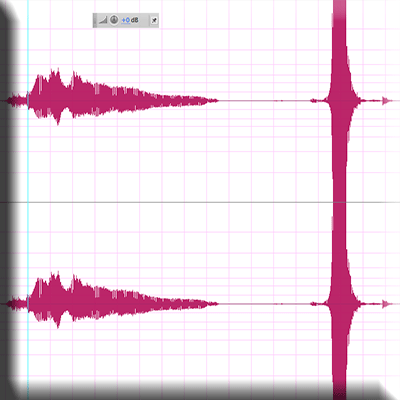In different ways, the body of texts collected in this thread comprise a multimodal engagement with the intersection of queerness and aurality. In both format and formal characteristics, many of the included texts inhabit liminal generic spaces and hybrid media forms, continually threatening to push beyond existing format categories and, in doing so, continually gesture towards the perpetual coming-into-being that characterizes sound.
Queer the Noise
“Make the Music with Your Mouth”: Sonic Subjectivity and Post-Modern Identity Formations in Beatboxing
This paper investigates the possibilities of pleasure, sound, and the disruption of the iterations of identity in progressive time. How does sound reformulate how we see whiteness, heterosexuality, and female-bodied people? Beatboxing as a citational and intertextual form—phatic, rhythmic, sonorous, and lyrically side-steps some of the traps of rap music or other hip hop forms through its embodiment of sounds rather the logics of lyrics and traditional musical structure. In that way it remakes—queers—our alliances, allegiances, and sonic sensibilities.
Preservations of Silence in the Queer Archive
Ditzler’s recording blurs the lines between theory, aural ethnography, and critical intervention. Framed as an attempt to archive a site-specific “telling” of one queer-identified man’s history, it is in the recording’s failure to capture that telling as a “whole” (i.e., in ways that perpetuate the fantasy of unmediated access to the past by rendering the fact of recording invisible) that the piece’s queer potentialities emerge.
Invisible People (A Radio Opera)
Invisible People (A Radio Opera) is a series of site-specific performance-compositions confronting queer black identity.
Whistlin’ Dixie
Whistlin’ Dixie seeks out folks at the forefront of the Southern queer music scene — living examples that queer community can thrive in these previously written off country roads and postindustrial cities. This documentary showcases these communities and examines their influences, challenges and motivations while putting a face on what it means to be queer, young and Southern.
I STAND IN RUINS BEHIND YOU: QUEER TACTICS OF NOISE
Daniel J Sander’s article specifically takes up noise as a tactic that enacts “the stigmatizing cut of queerness” in ways that take up contamination, fragmentation, abjection, and melancholia as modes of queer subjectivity and sociality. By tracing the echoic afterlives of Foreigner’s “I Want To Know What Love Is” in explicitly queer texts, Sander links the aural contamination of the original song to practices of queer world-building and self-making that inhabit those spaces which cannot be redeemed by the logics of capitalist production and reproductive futurity.
Don Loves Roger
Elisa Kreisinger’s clever reworking of the dialogue from “Mad Men” introduces to the show’s portrayal of 1950s corporate and advertising culture a queer noise that makes audible the homoerotic desires and potentialities that are always already embedded in these spaces. Sound and silence are crucial to this intervention, for the desires that are otherwise unspeakable in this space are articulated in and through silences. By making silences not only speak, but speak queerly, Kreisinger inverts the pattern of silencing that has historically been used to render queer desires publicly unspeakable.
“A Very Soft or Long Attack and Release” or Heyyyyy: Queer Extensities
Amalle Dublon’s piece takes up extensity — the drawing out of certain sounds in verbal speech — as a phonic gesture that exceeds the temporal (and we might argue productive) regulations of merely representative, coded speech. In doing so, extensity creates what Dublon describes as “a kind of anticipatory penumbra that halos and holds the unstable coordination of mutual respondents.” Here, Dublon’s work seemingly provides an entry point into imagining queer community-formation as a project made possible by phonic excess.
Toward a Queer Temporality of Hip Hop: An Annotated Playlist
Hilary Berwick’s annotated playlist suggests that black musical practices enact temporal interventions within which currents of desire, identification and memory reshape the boundaries of what is representable. Indeed, Berwick’s discussion of haunting as a primary mode of hip hop representation demonstrates the potential contributions that engagements with sonic culture could make to explorations of the erotic and psychoanalytic dimensions of black historical memory and practices of remembrance, particularly as it relates to reckoning with trauma.
